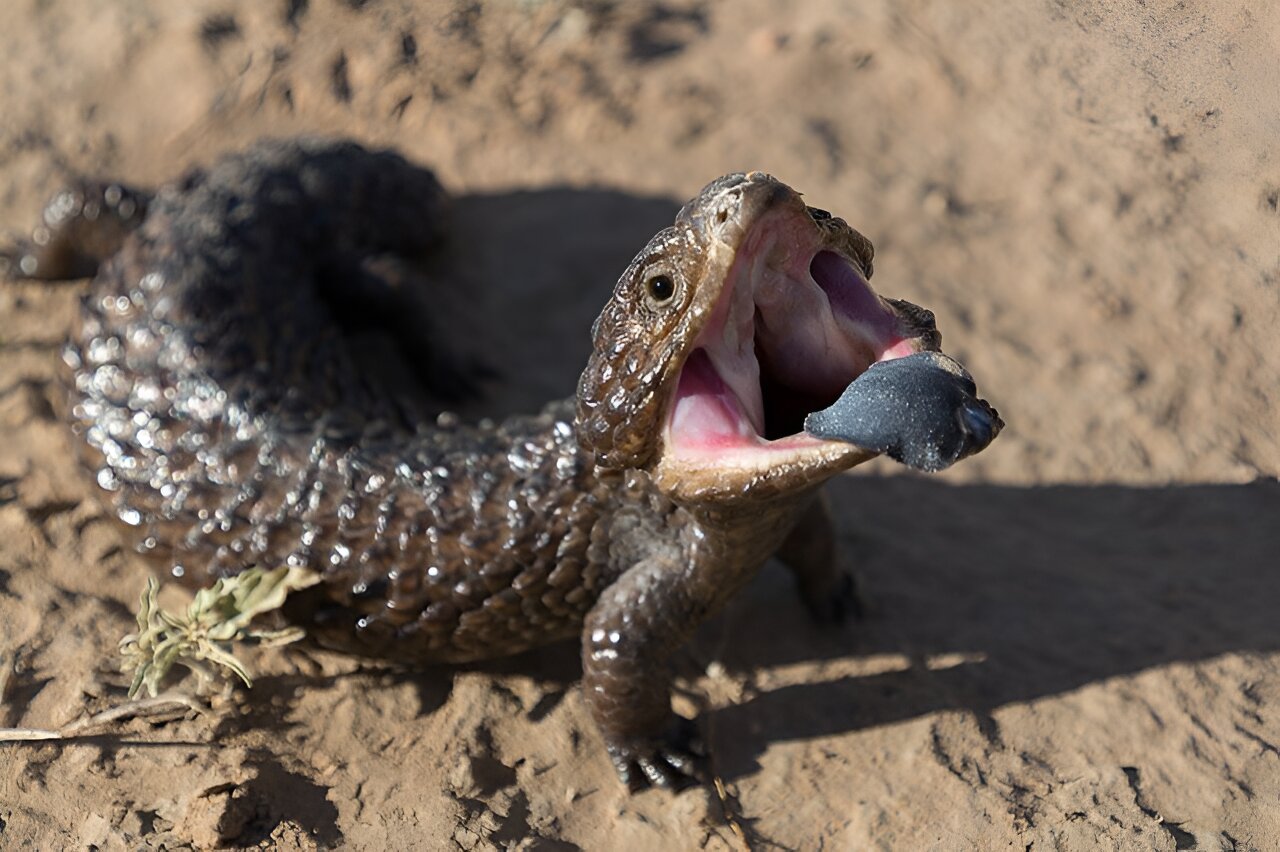Scientists have used bobtail lizards to create the world’s first database of “odors” from a living animal.
The researchers collected bobtails—or shinglebacks as they’re known in the Australian eastern states—from around Australia, including Western Australia. They then analyzed the volatile organic compounds (aka smelly chemicals) released by the lizards.
It’s hoped that the technology can be used to detect bobtails illegally smuggled in luggage and other cargo.
Wildlife forensics expert Dr. Amber Brown led the research as a Ph.D. student at the University of Technology Sydney and the Australian Museum Research Institute. She says the results should put wannabe wildlife traffickers on notice.
“I found that 44 compounds were shared across all habitat types and captive shinglebacks,” says Amber. “So those are good targets for detection.”
The romantic lizards
Since bobtail lizards are commonly found sunbathing in our gardens, most Aussies probably wouldn’t expect the shy creatures to be one of the most commonly poached Australian animals.
One lizard can fetch tens of thousands of dollars on the global black market. According to Dr. Brown, many are taken from the wild and illegally exported as exotic pets.
“This is particularly challenging for the shingleback because they are monogamous,” she says. “They also give birth in sets of twins, so their reproductive rate is not great.”
Catching a scent
Dr. Brown moved to Australia from the United States for her Ph.D.—dreaming of becoming a crocodile hunter like Steve Irwin.
“I’ve always loved Australian wildlife, specifically reptiles,” she says. “To have the opportunity to do my Ph.D. in this field, working with those animals and having positive outcomes, was a dream come true.”
Her research was built on the principles of her supervisor’s work, which uses odors to detect human remains.
Theoretically, Dr. Brown knew that she could use two-dimensional gas chromatography coupled with time-of-flight mass spectrometry instruments. But just because something is possible doesn’t mean it’s easy. It took Brown a full year to adapt the method for bobtails.
“I had to create the dimensions for the sampling container,” she says. “I had to see how I could decontaminate the sampling container without harming the animals, removing all the [volatile organic compounds] from the sampling container without using toxic chemicals.
“I then had to see how much time I had to have animals stay in the box in order for it to produce its odors—how long I collected them for without stressing out the animal. What material was best to collect their odors as well as how to best adapt the instrument.”
According to Dr. Brown, bobtails can release different odors depending on their size, age, gender, diet, genetics and whether they have ticks. She says her research has also linked certain odors to individual regions. It means scientists may be able to identify where confiscated lizards have come from and return them to their home environment.
While the technology isn’t ready to be used by border security just yet, Dr. Brown says science is always developing better detection methods.
“There’s a lot of potential,” she says. “It’s not a perfect method yet, but i think we’re well on our way, which is exciting.”
This article first appeared on Particle, a science news website based at Scitech, Perth, Australia. Read the original article.
Citation:
Researcher creates world’s first database of animal ‘odors’ using shingleback lizards (2023, November 13)
retrieved 13 November 2023
from https://phys.org/news/2023-11-world-database-animal-odors-shingleback.html
This document is subject to copyright. Apart from any fair dealing for the purpose of private study or research, no
part may be reproduced without the written permission. The content is provided for information purposes only.
Denial of responsibility! TechCodex is an automatic aggregator of the all world’s media. In each content, the hyperlink to the primary source is specified. All trademarks belong to their rightful owners, and all materials to their authors. For any complaint, please reach us at – [email protected]. We will take necessary action within 24 hours.

Jessica Irvine is a tech enthusiast specializing in gadgets. From smart home devices to cutting-edge electronics, Jessica explores the world of consumer tech, offering readers comprehensive reviews, hands-on experiences, and expert insights into the coolest and most innovative gadgets on the market.


